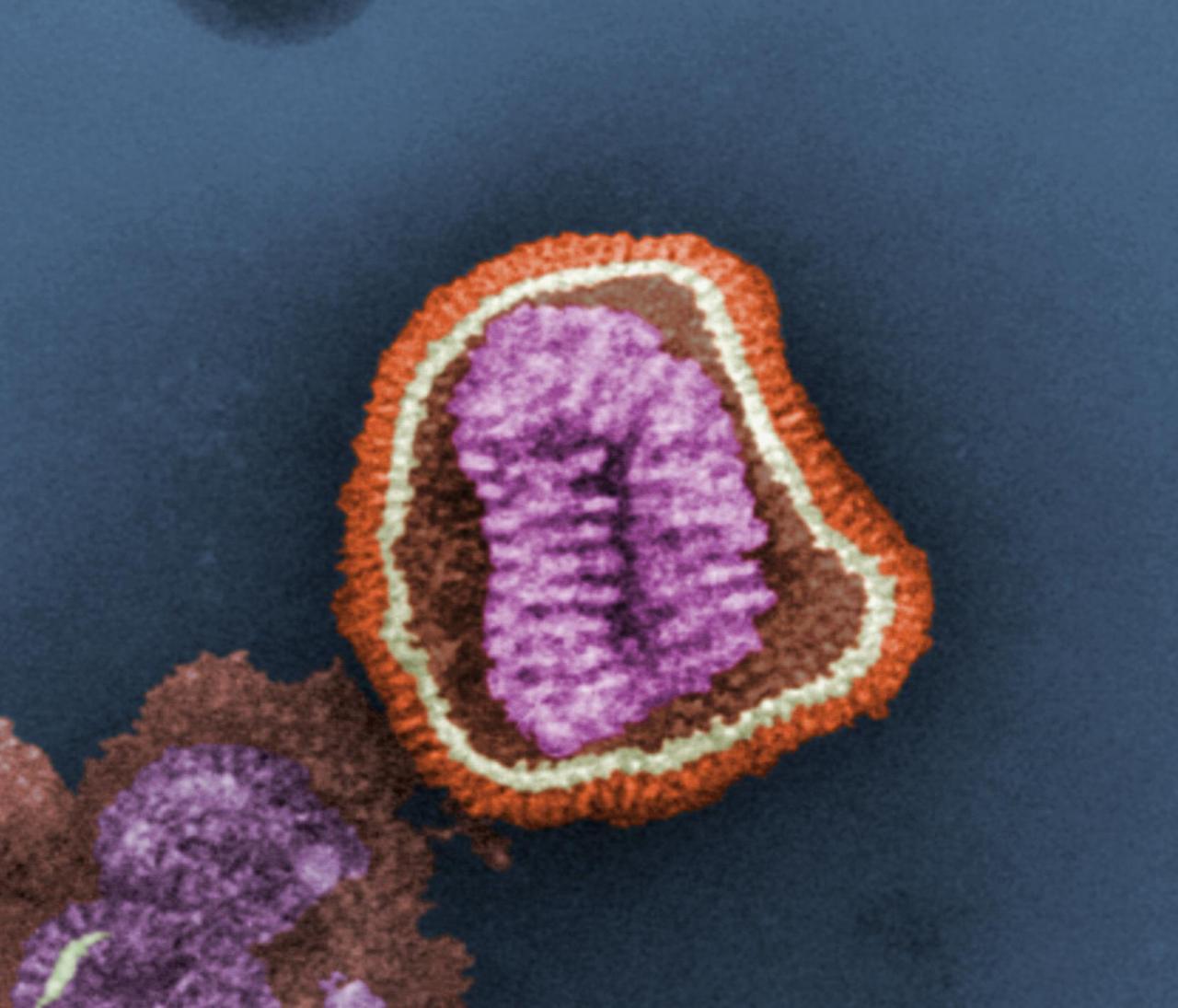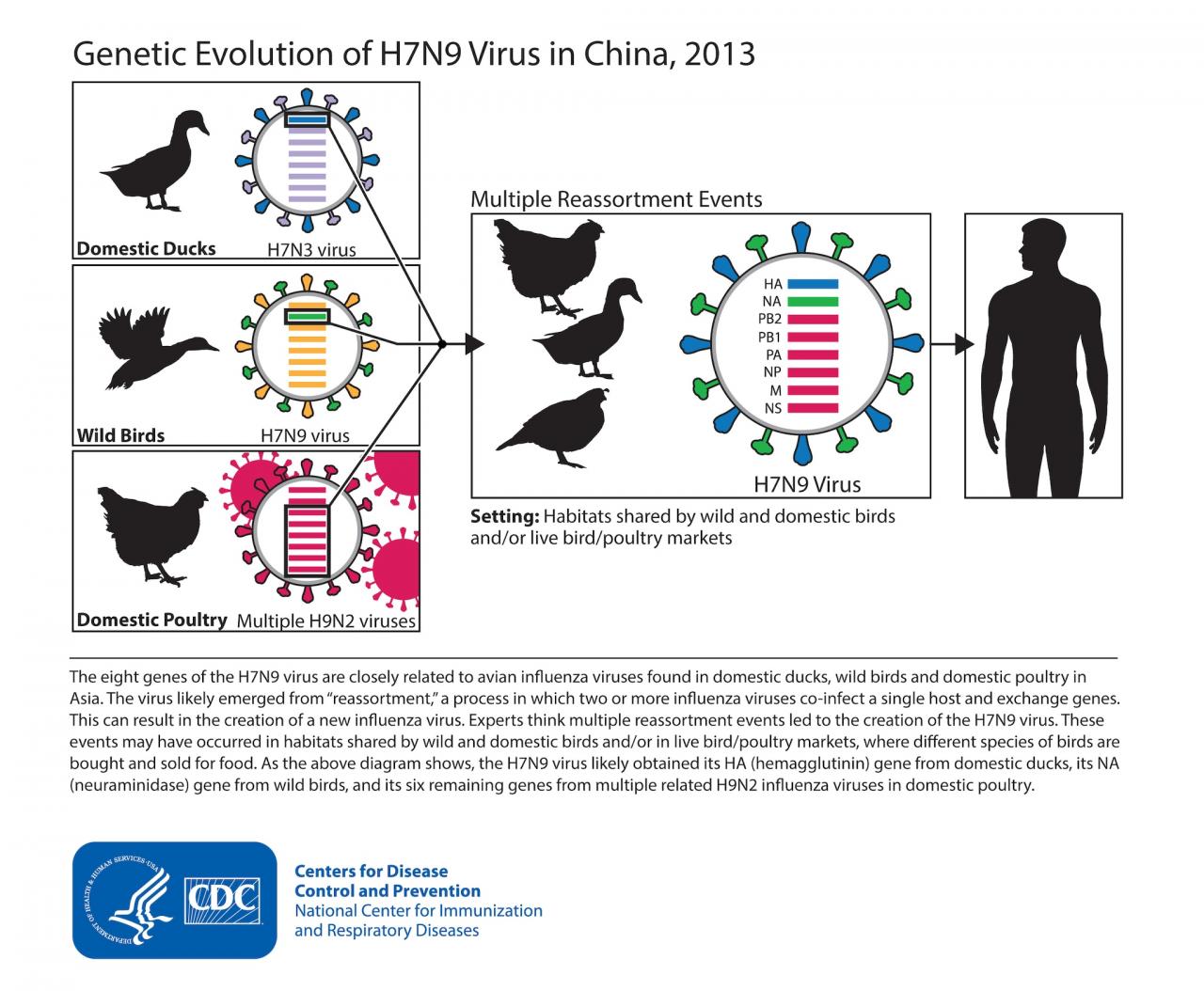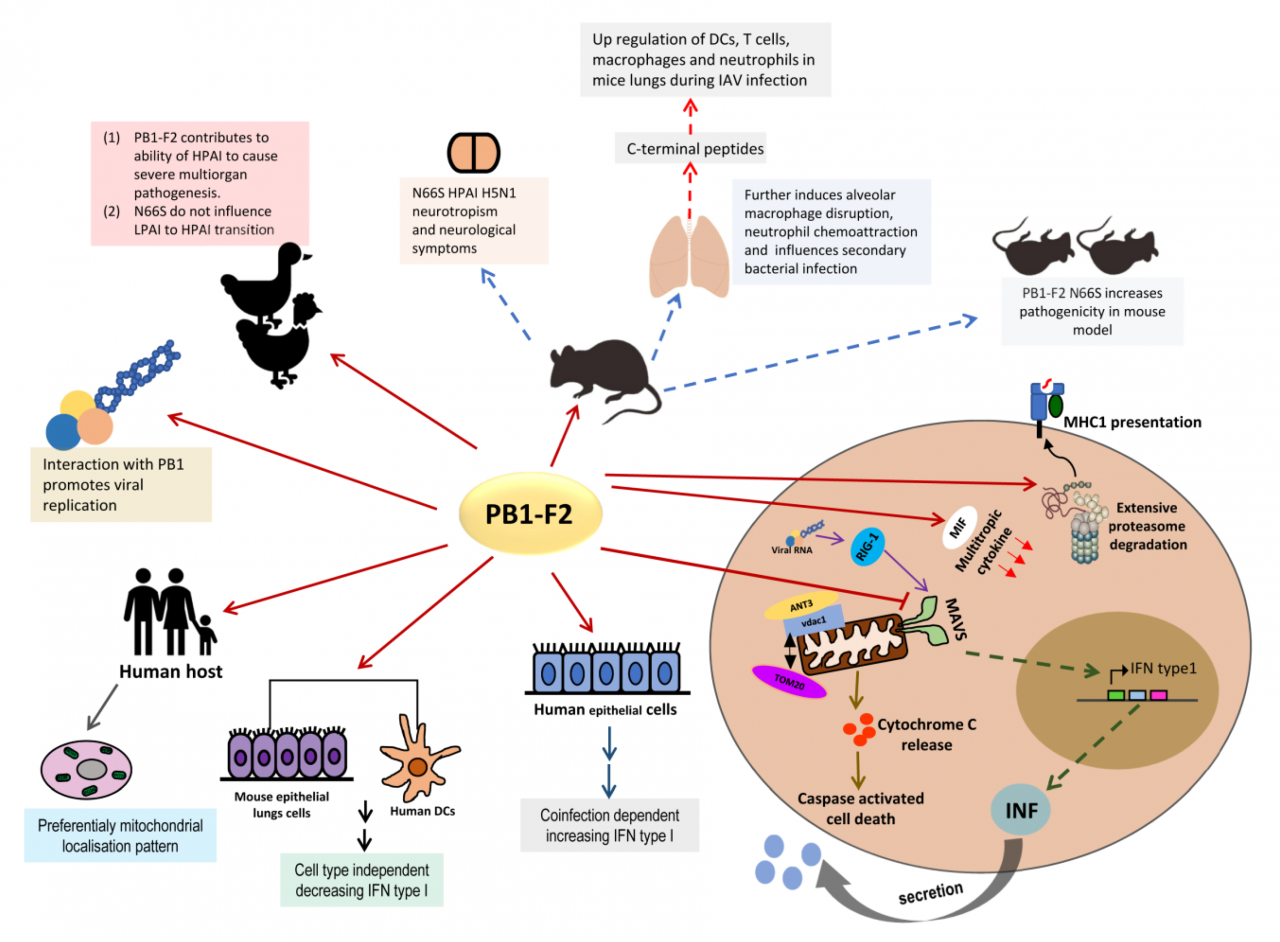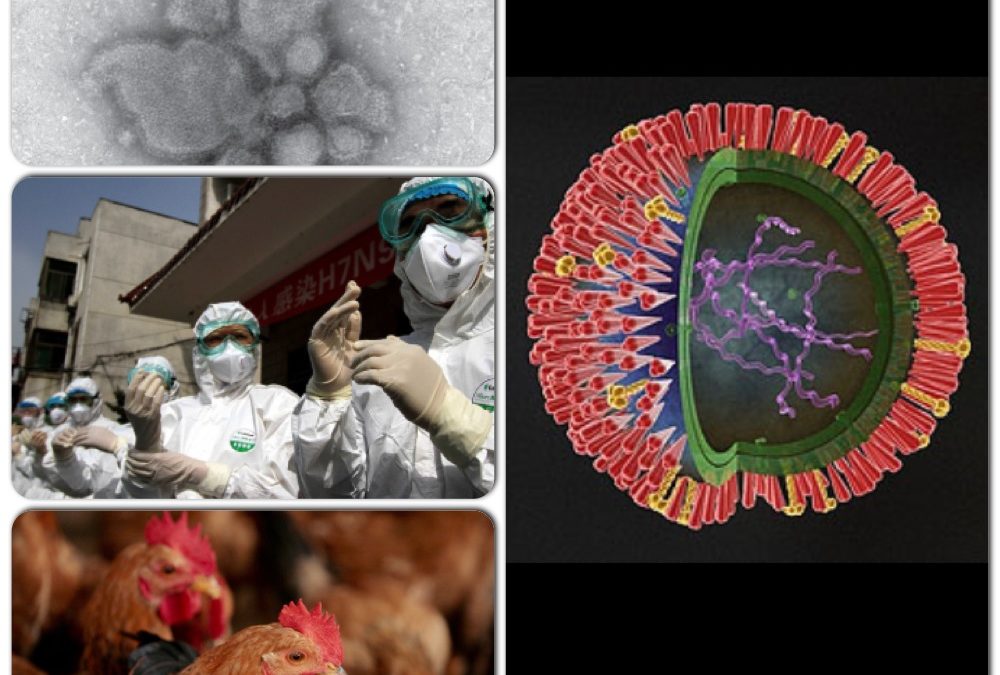
The H7N9 influenza virus, a topic of global concern, has sparked the attention of the scientific community and public health organizations alike. With its unique characteristics and potential impact on human health, H7N9 demands thorough examination and understanding.
Originating from avian influenza strains, H7N9 has undergone genetic mutations that have enabled it to infect humans. Its complex structure and genetic makeup set it apart from other influenza viruses, posing challenges for prevention and treatment.
Origin and Characteristics of H7N9
The H7N9 virus emerged in 2013 as a novel avian influenza strain originating from poultry in China. It is a subtype of influenza A virus that primarily infects birds but has the ability to cross over to humans. H7N9 has a unique genetic makeup, possessing a combination of avian and human influenza virus genes.
It has undergone multiple mutations and reassortment events, leading to the development of distinct genetic lineages.
Genetic Makeup and Structure
H7N9 virus has a negative-sense, single-stranded RNA genome composed of eight segments. The genome encodes 11 proteins, including the hemagglutinin (H) and neuraminidase (N) proteins. The H protein is responsible for binding to host cells, while the N protein facilitates the release of newly formed viral particles from infected cells.
Unique Characteristics
H7N9 virus exhibits several unique characteristics that differentiate it from other influenza viruses. It has a high affinity for binding to human receptors, which contributes to its ability to infect humans. Additionally, H7N9 virus has shown resistance to certain antiviral drugs, such as oseltamivir, making treatment more challenging.
Transmission and Epidemiology
H7N9 virus is primarily transmitted through contact with infected poultry or contaminated environments. Human-to-human transmission has been documented but is considered rare. The virus can be spread through respiratory droplets, such as when an infected person coughs or sneezes. Contact with contaminated surfaces or objects can also lead to infection.
Geographical Distribution and Prevalence
H7N9 virus infections have been reported in several countries, including China, Hong Kong, Taiwan, and Canada. China has experienced the majority of cases, with outbreaks occurring primarily in the eastern and southern regions. The prevalence of H7N9 virus infections varies over time, with seasonal peaks typically observed during the winter months.
Factors Contributing to Spread and Containment
The spread of H7N9 virus is influenced by factors such as poultry farming practices, human behavior, and environmental conditions. Improved poultry vaccination programs, enhanced biosecurity measures, and public health campaigns have contributed to the containment of the virus. However, the potential for future outbreaks remains, highlighting the need for ongoing surveillance and preparedness.
Clinical Manifestations and Treatment

H7N9 virus infection can cause a range of clinical manifestations, from mild respiratory symptoms to severe pneumonia and acute respiratory distress syndrome (ARDS). The incubation period is typically 2-7 days.
Clinical Symptoms
Common symptoms of H7N9 virus infection include fever, cough, sore throat, muscle aches, and fatigue. In severe cases, patients may experience difficulty breathing, chest pain, and low blood oxygen levels.
Treatment, H7n9
Treatment for H7N9 virus infection involves supportive care and antiviral therapy. Antiviral drugs, such as oseltamivir and zanamivir, can be effective in reducing the severity and duration of symptoms. However, some strains of H7N9 virus have shown resistance to oseltamivir, making treatment more challenging.
Public Health Implications

H7N9 virus has significant implications for public health systems and preparedness. Outbreaks can lead to widespread illness and strain healthcare resources. The virus has also raised concerns about its potential to evolve into a more transmissible and pathogenic form.
Impact on Public Health Systems
H7N9 virus outbreaks can overwhelm healthcare systems, particularly in areas with limited resources. The need for isolation, hospitalization, and intensive care can put a strain on hospitals and medical staff. Additionally, the use of antiviral drugs can be costly and may not be readily available in all settings.
Challenges and Strategies for Prevention and Control
Preventing and controlling H7N9 virus outbreaks requires a multi-faceted approach. Measures include enhanced surveillance and monitoring of poultry populations, implementation of biosecurity measures in poultry farms, and public health education campaigns. Early detection and isolation of infected individuals are also crucial for containing the spread of the virus.
Surveillance and Research

Surveillance and monitoring are essential for tracking the spread of H7N9 virus and identifying potential outbreaks. Ongoing research efforts focus on understanding the virus’s evolution, developing vaccines and treatments, and improving public health preparedness.
Importance of Surveillance
Surveillance systems play a vital role in detecting H7N9 virus infections in humans and animals. This information helps public health officials monitor the spread of the virus, identify areas at risk, and implement appropriate control measures.
Ongoing Research
Research on H7N9 virus is ongoing, with the aim of developing vaccines, treatments, and diagnostic tools. Scientists are studying the virus’s genetic makeup, pathogenicity, and transmission dynamics. Additionally, researchers are exploring the potential for using antiviral drugs and other therapies to combat H7N9 virus infection.
Wrap-Up

H7N9 remains a significant public health concern, requiring continued surveillance, research, and collaborative efforts to mitigate its impact. As scientific advancements progress, we can anticipate improved vaccines, treatments, and strategies to combat this evolving virus.





